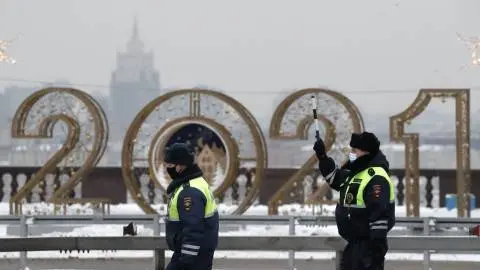January economic update: Hardly a happy new year
2021 is set to be far better than 2020; how could it not be? But before recovery comes later in the year, we're still facing a bleak few months, not least in the northern hemisphere
A disappointing start
New Year, new beginnings. Starting with a clean sheet, 2021 can only be better than 2020 and we're all glad that, as Queen Elizabeth once put it, that 'annus horribilis' is finally over. We have heard all these comments, wishes and New Year resolutions. Some of us probably even started to believe in them. That's why the start of this new year has been so disappointing. Instead of light at the end of the tunnel, the discussion is about a mutated virus, extended and stricter lockdowns and problems with the supply and distribution of the long-hoped-for vaccine. It's anything but a good start.
At first glance, it looks as if differences between countries and regions in terms of lockdowns and vaccinations have increased again. However, these differences could quickly turn out to be just short-term noise, with at least Europe and the US quickly converging (again) to very similar situations. Coming up with credible point forecasts is in these circumstances is more difficult than ever. The number of infections is probably still distorted by delayed Christmas reporting, no one knows whether lockdowns will end at the end of January, the end of February or even later still. No one knows how and when the vaccination strategies will really gain momentum.
I explain more in my short video below, do click on it!
We remain positive for the year
With all these uncertainties, it is best to take a step back and look at the bigger picture. That has hardly changed and it does remain positive. However, we'll only see evidence of that later this year. In our view, it doesn't really matter who's first in starting the vaccination programmes. It is more important that good infrastructure and organisation is put in place. Governments and producers will do everything they can to increase the supply of vaccines in the coming weeks and months.
Therefore, it is still fair to assume in our base case scenario that together with warmer weather, governments will ease the lockdown restrictions in early spring and that the rollout of the vaccine will gain momentum. In this scenario, we should see a significant pick-up in most economies by the second quarter. Supported by ongoing fiscal and monetary stimulus, our view that the global economy stages a strong recovery in the second half of the year remains intact. Winter might be darker than would wish, but light will return.
Three main risks
Still, as they say, this base case scenario is subject to high uncertainties and right now the risks are rather tilted to the downside. Here are just a few of those risks:
New virus: Just think of the UK and South African Covid variants which spread significantly faster and are becoming a dominant strain. This moves the goalposts as the R-rate, an indicator of how well the virus can spread, is now higher for any given level of restrictions. In theory, tighter rules are needed to keep R where it would have been before. It is unclear whether or not these virus variants are already everywhere, being one reason behind the increased number of infections. ·
Vaccine risk: There is no evidence yet but what if the new variants affect the current formulation of vaccines? This could effectively press 'reset' on the vaccination programmes. While manufacturers quickly tweak the formulation of their vaccines, and regulators work hard to speed it through, the process may need to start again. The question here is whether the existing vaccine provides immunity to new strains? Right now, scientists remain largely confident they will. But the risk of mutations is higher if community transmission remains elevated.
Medium-term upside risk: Despite all short-term downside risks, a potential upside risk to our forecast is that in the second half of the year, the consumer-led recovery turns much stronger than expected and we get a virtuous cycle of employment and investment growth. Who would sign up for this one? In our first Monthly Economic Update of the year, we try to answer the three most pressing questions per region: what is the short-term outlook in light of new restrictions? When can we expect a vaccine effect and how strong could the recovery be?
Happy New Year.
Full forecast tables are available in the PDF version of this report

This publication has been prepared by ING solely for information purposes irrespective of a particular user's means, financial situation or investment objectives. The information does not constitute investment recommendation, and nor is it investment, legal or tax advice or an offer or solicitation to purchase or sell any financial instrument. Read more
Download
Download article
7 January 2021
Seriously, keep the faith! This bundle contains 10 Articles
